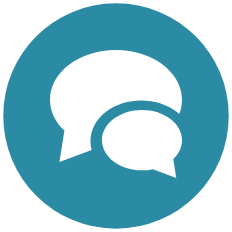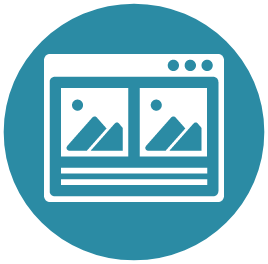Enter your details below to stay up-to-date with the latest IT solutions and security measures.
Top four focus solutions for NZ healthcare IT
As a result of the global pandemic, technological progress within healthcare practices across New Zealand has processed faster than ever imagined. Here’s a list of IT solutions for healthcare that will ensure your business stability and improve customer experience during your digitalisation journey.
Cloud solutions to enhance healthcare IT
Cloud migrations have become a common IT solution for healthcare practices, especially migrations to Microsoft 365 with its advanced toolset, including:
- Video conferencing
- File sharing
- Teams for remote access and collaboration
But what exactly is Cloud? An IT cloud encompasses a set of IT solutions specific to your healthcare business needs. An IT cloud resides in a service provider’s infrastructure and typically offers
- Faster and easier access to your data via the internet
- Subscription OPEX cost models that are more manageable than CAPEX alternatives often laden with associated maintenance, upgrade, and professional service charges.
However, it’s important to understand that backup services are not included in many Cloud offerings, notably Microsoft 365. The responsibility for backups lies with you. It’s important to protect your organisation’s data from unexpected loss.
Cybersecurity solutions
Cybersecurity in healthcare involves the protection of electronic information and assets from unauthorised access, use and disclosure. There are three goals of cybersecurity to protect data in terms of:
- confidentiality
- integrity
- availability
Healthcare organisations in NZ are becoming more and more mindful of ever-increasing cyberattacks, such as that at the Waikato DHB on 18 May 2021. Increasingly, more organisations are choosing preventive security solutions to keep their staff and patient data safe.
Typical risk areas for healthcare include:
Cybercriminals use phishing tactics to lure users to unknowingly click on a malicious link or open a malicious attachment within a phishing email and infect their computer systems with malware. The best IT solution for healthcare organisations is regular security awareness training. It arms the humans in your medical practice with an understanding of how important they are in the cybersecurity effort. Training is critical to thwarting phishing attempts.
Physical Security
Careless actions may lead to the theft or loss of laptops, opening the organisational network up to data theft. Cybercriminals can also access devices via the web, then lay dormant in the system, silently collecting sensitive information such as credentials via key-loggers. To reduce this risk, organisations can install network intelligence (NI) solutions to scan the environment for unusual behaviours. Unusual behaviours can include logins from unexpected geo-regions or unexpected downloads and activities. NI will raise an alert for security engineers within a security operations centre to investigate further.
Legacy systems
Legacy systems are those that the manufacturer no longer supports. Those systems may include applications, operating algorithms, or otherwise. One challenge for cybersecurity in healthcare is that many organisations have a significant legacy system footprint. The disadvantage of legacy systems is that they are typically not supported anymore by the manufacturer. As such, there is generally a lack of security patches and other updates available. Legacy systems may exist within organisations because they are too expensive to upgrade or because an upgrade may not be available. Operating system manufacturers may sunset systems, and healthcare organisations may not have enough of a cybersecurity budget to upgrade systems to presently supported versions. Medical devices typically have legacy operating systems. Legacy operating systems may also exist to help support legacy applications for which there is no replacement.
Telemedicine
Using healthcare IT solutions to diagnose or treat patients from a remote location is called telemedicine. The global pandemic has shown why telemedicine is indispensable, and it will continue to be so as its applications and benefits grow. Freeing up waiting rooms has helped contain the spread of illness. Vulnerable clients or those with travel difficulties have benefitted from alternative communication methods. In addition, the convergence of cloud technology and video conferencing has driven down the cost of offering telehealth services, making the process affordable to more healthcare providers and their patients.
Telemedicine can significantly streamline doctor visits
Take a working mother whose child has chronic ear infections, for example. Instead of taking the whole day off from work, loading the child into the car, and heading to the nearest clinic, she can speak with a doctor from the comfort of her own home and get a faster diagnosis and prescription, all while avoiding the germs inside a doctor’s office waiting room. In other instances, virtual visits are more than convenient; they are life-saving. For example, doctors can use video to quickly diagnose a stroke victim’s symptoms and suggest immediate action to minimise further damage to the brain or bring in specialists around the country to provide instant care. For patients who are house-bound or who live in hard-to-reach or underserved rural areas, telemedicine also includes access to quality doctors they wouldn’t otherwise have.
Platforms such as Microsoft Teams and Zoom saw increased uptake due to their virtual communication feature sets which were found to be hugely beneficial IT solutions within the healthcare sector. Tools built explicitly for the sector, including ManageMyHealth, also enjoyed higher adoption rates.
Benefits of telemedicine include:
- Reduced cost of care – Telemedicine is quick yet personal.
- Faster diagnosis and treatment in instances of critical care – Telemedicine offers physicians a quicker way to assess critical-care patients without adding stress to their already vulnerable health states.
- Improved access to care – especially in rural areas and for lower-income families
- Higher patient satisfaction – patients are more likely to open up. They feel less stressed and more comfortable. The doctor gains a more honest assessment of patient health and expectations.
- Reduced readmission rates – seeing the doctor face to face in a video conference and being able to get back in touch with him at any time increases the likelihood that patients will follow recommendations and take their role in their healthcare more seriously.
- Improved follow-up care – a video visit helps physicians determine whether their patients need in-person attention. Doctors can also maintain patient contact with less travel and less pressure to treat as many patients as possible in a set time.
Network Health
Many healthcare organisations still struggle with the best way to support and use these services. Practices need to pay attention to the health of their internal network. An organisation’s network forms the foundation for effective performance. If one element is underperforming, the whole mechanism can be negatively affected by poor speeds, ultimately affecting the quality of patient care. Healthcare organisations often use outsourced IT solutions since it is usually unnecessary to keep a sysadmin on the payroll. Partnering with an IT provider means you have access to greater expertise, experience and tools to ensure your environment is optimised and maintains high standards. One such tool is network intelligence which helps you spot issues – and resolve them – before they happen. An IT provider can give you a complete and accurate map of your network, identify any potential trouble spots with your network, and work toward resolving them.
Network intelligence will help:
- Reduce business risk
- Improve productivity
- Provide visibility of your network
- Identify issues before they happen
In Summary
Cloud, cybersecurity, telemedicine advances and network health should be your main focus in 2021.
To learn more about health IT services is recommended to visit NSP’`s Healthcare webpage.
To go deeper into IT services, click on NSP solutions.










